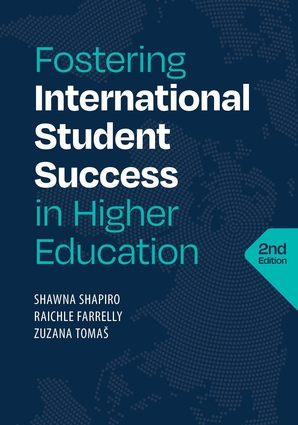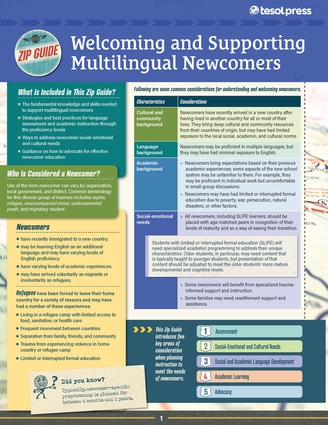Ask a TESOL Leader: "How can I help my ELs come up with more specific goals?"
by Graciela Martin
Question: "When I ask my ELs about their English learning goals,
they inevitably say ‘My goal is to speak English better.’ How can I help them
come up with more specific goals?"
In my teaching experience, I have also met many
English learners (ELs) who said their goal was to speak English better. I
believe this is a common goal in particular among students who start learning
English or among those who decide to resume classes after having dropped a
previous course.
Many ELs end up being frustrated and dropping out
because they fail to accomplish that self-generated goal, and goals that are
neither specific nor realistic end up harming students’ language learning
experience. Consequently, learning to set realistic speaking goals is an
essential part of a learner’s language acquisition journey. Well-defined goals
will help students focus on what is important, ensure steady progress, and
contribute to boosting motivation. So, how can we help our students come up
with more specific goals? This is certainly a great question and a challenge as
well.
 The first thing we could do is help students become
aware of their actual level of English speaking proficiency and establish
achievable objectives from there. I believe that many of us have experienced
teaching ELs who believed their speaking proficiency was either significantly
higher or lower than it actually was, making it nearly impossible to set
realistic goals. Helping raise awareness is crucial. You can’t reach your
destination if you don’t know where you stand. To accomplish this step, we
could use standardized tests, interviews, or speaking assessments.
The first thing we could do is help students become
aware of their actual level of English speaking proficiency and establish
achievable objectives from there. I believe that many of us have experienced
teaching ELs who believed their speaking proficiency was either significantly
higher or lower than it actually was, making it nearly impossible to set
realistic goals. Helping raise awareness is crucial. You can’t reach your
destination if you don’t know where you stand. To accomplish this step, we
could use standardized tests, interviews, or speaking assessments.
As a second step, we could follow TESOL’s 6 Principles
for Exemplary Teaching of English Learners®
and try to get to know our ELs better. We could conference with our students to
know about their English language goals and how these goals relate to their
life/career aspirations. This exchange would provide us with relevant
information to help our students set realistic objectives to successfully reach
their destination. We could then assist them in breaking down this broad goal
of speaking English better into smaller, short-term objectives that are
specific, measurable, attainable, relevant and time-bound, following the SMART
framework for setting goals.
In this way, as ELs advance in their language
acquisition journey, they will get a sense of accomplishment that will motivate
them to pursue further goals. There is nothing more motivating than being
successful. If they achieve a first specific time-bound goal, they would feel
empowered to go after the second specific time-bound goal, and so on.
Finally, we should encourage ELs to bear in mind
that during their language learning journey, they will successfully reach many
milestones, though they might experience some layovers to get to others.
Informing learners about the average time needed to achieve advanced speaking
skills is extremely important so as to avoid disappointment and burnout. Many
students don’t expect to be in an English language program for many years, so
we should make them aware of the fact that English language learning is a path
that requires time and practice. For further support, we might decide to
introduce students to internationally recognized frameworks for assessing
language proficiency, like the ones provided by ACTFL
or CEFR,
so that they know there is research that helps understand how students progress
in their language proficiency.
In my experience, working with adolescent and adult
ELs, I have discovered that drawing parallels between their journey toward
advanced speaking proficiency and that of a sports player, a pianist, or any
skilled individual can be enlightening and motivational. Students understand
that the road of any skilled sports player is made of practice and
perseverance, even in the case of gifted players. The more they practice, the
better they get and the more they accomplish. Each step of their journey is
built on the previous step and serves as a scaffold to the next. Any successful
soccer player was once a beginner learning first to control the ball, then to
keep the ball and use the base foot to keep balance, and later learning to
juggle, kick a goal, and score! In the same way, an EL first learns vocabulary
and how to mouth the sounds, then moves on to produce simple phrases and then
sentences, and so on.
I would suggest choosing a famous player who your
students admire and follow, and having them find out about their success story.
In my case, being a teacher in Argentina, a country where soccer is the most
popular sport, I like to use Lionel
Messi’s story. He is a famous Argentine soccer player who said, “You
have to fight to reach your dream. You have to sacrifice and work hard for it.”
Even in his case, as a skilled player, a gifted player, he has always worked
hard to improve his game and has had many obstacles to face. This is something
that many ELs can relate to: their road to being proficient speakers can be
long and bumpy, and entail hard work, but it is worthwhile because they will be
able to communicate successfully and that, in turn, will help them reach their
life goals and dreams. Our role as teachers is to be there for them,
facilitating their path and coaching them on the best ways to get where they
want, making their learning experience as enjoyable as we can.
Do you have a question for the TESOL leadership? Email your question to tc@tesol.org with the subject line "Ask a TESOL Leader" and it could be featured in this column!
Graciela Martin is the academic coordinator in charge of
the English language and teacher development programs at Instituto Cultural
Argentino Norteamericano. She is a graduate from Instituto Superior del
Profesorado Joaquín V. González and holds a degree in education from
Universidad Nacional de Quilmes, Argentina. Graciela is a former president of
ARTESOL and a current member of the TESOL International Association Board of
Directors, serving as the Finance Committee chair. Her areas of interest
include technology in education, materials/curriculum development, and teacher
training.
TESOL Bookstore

Featured Resources from TESOL Press
ELT Basics is an invaluable resource for those seeking a straightforward, practical, and foundational understanding of English language teaching. This book covers a broad range of important topics, such as what it means to “know” a language, how people learn new languages, and what teachers can do to teach English effectively. Whether you’re looking for a basic understanding of ELT or considering a career in language teaching but want to know more first, this book will teach you about language acquisition as well as how to plan, instruct, and assess multilingual learners of English.
 Fostering International Student Success in Higher Education, Second Edition
Fostering International Student Success in Higher Education, Second Edition
Shawna Shapiro, Raichle Farrelly, Zuzana Tomaš
(Copublished by TESOL and NAFSA)
The increase in the number of international students attending English-dominant schools brings benefits as well as challenges for institutions. Shapiro, Farrelly, and Tomaš provide a lively, informative discussion that answers the questions instructors commonly ask when seeking to ensure success for these students: What do I do to help students be successful in U.S. academic culture? How can I ensure that the content for my course is comprehensible to students who are still learning English? How do I design assignments and assessments that are fair while still acknowledging the difficulty of doing academic work in a second or foreign language? How might I treat international students as a linguistic and cultural asset in the classroom, and help them to become institutionally integrated?
 TESOL Zip Guide:
TESOL Zip Guide:
Welcoming and Supporting Multilingual Newcomers
Amber Warren, Melissa Hauke, Jan By Ying Hui-Michael, Adrienne Johnson
Newcomers are students who have recently immigrated to a new country, may be learning English as an additional language, and may have varying levels of English proficiency. This guide introduces five key areas of consideration when planning instruction to meet the unique social-emotional, linguistic, cultural, academic, and programming needs of multilingual learners of English who are newcomers. It includes strategies and best practices for language assessment and academic instruction through the proficiency levels, and guidance on how to advocate for effective newcomer education.